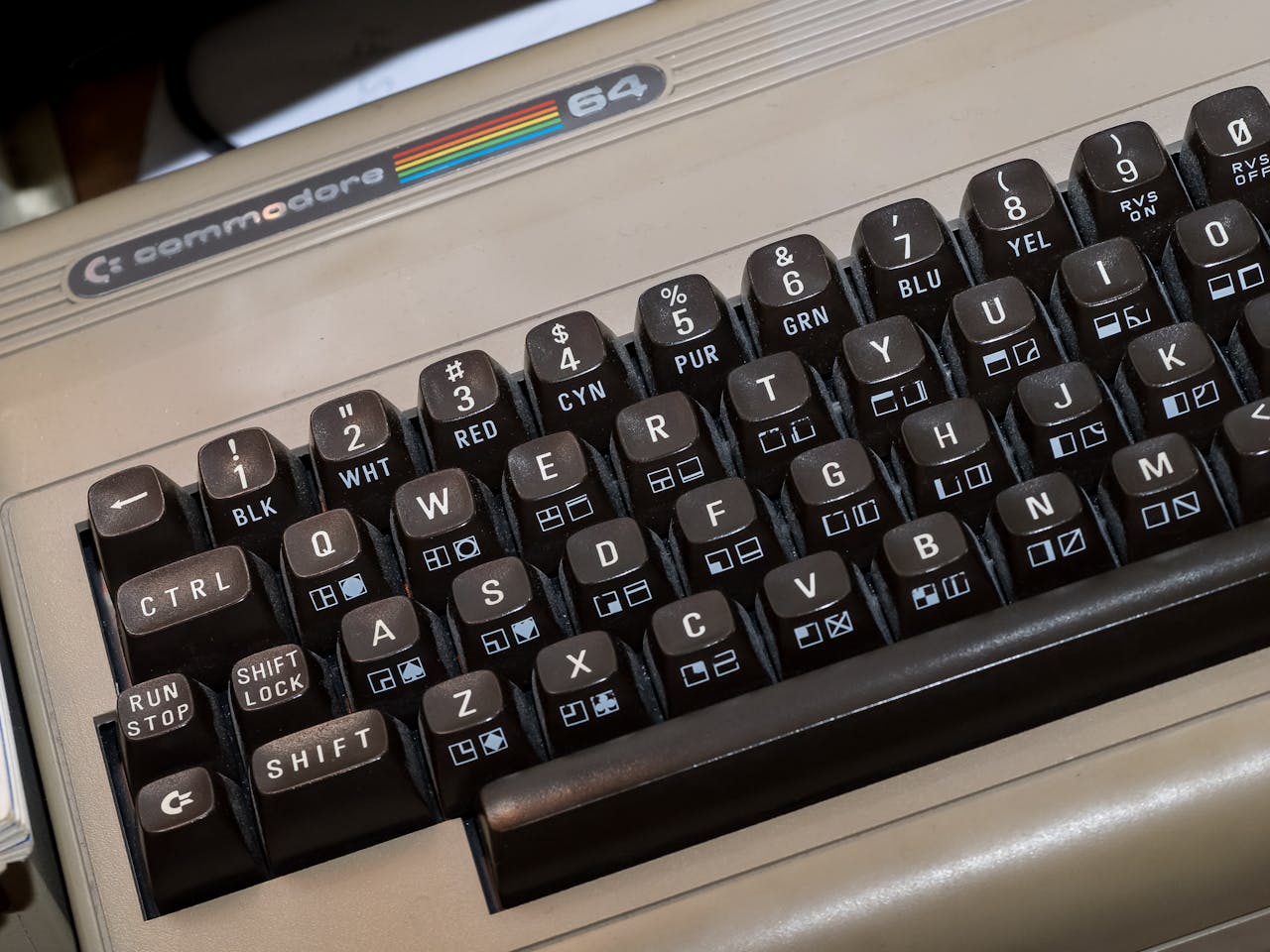Indiana bakery still using Commodore 64s originally released in 1982 as cash registers — Hilligoss Bakery in Brownsburg sticks to the BASICs

A recently posted photograph of old-school Commodore 64s, which debuted 42 years ago, in use as registers at a modern bakery has attracted a lot of attention. As further sleuthed by commenters, this bakery was identified as the Hilligoss Bakery in Brownsburg, Indiana, and the last publicly posted picture of the Commodore 64 register was in 2021. As such, we called the shop, and they verified that the registers are still in use.
At the time of writing, the establishment in question has 488 Google reviews with an average 4.7-star rating and 202 Facebook reviews with an average 4.5-star rating— and, if some reviews mentioning the C64 are any indication, it even seems to be busier than usual, likely encouraged by the spreading word of this retro tech curiosity.
Aside from the technical curiosity, it would seem that Hilligoss Bakery is actually well-appreciated in its local Brownsburg community for the quality of its pastries and not simply the oddity of using a "microcomputer" originally released in 1982— though to Hilligoss' credit, the shop actually opened back in 1974, which would make the Commodore 64s a year-eight acquirement at the earliest. We can only suppose that further upgrades haven't been needed since.
Apparently, a Doughnut shop in U.S. is still using a Commodore 64 for business. pic.twitter.com/i7gO90JAZ4December 16, 2024
While this may seem questionable— particularly in an era where it seems that nearly all business customers are being pushed to regularly upgrade their PCs— it's actually quite sensible when you consider the processing power required to do Point of Sale transactions, which isn't very much. Even for its age, Commodore 64 wasn't particularly overpowered — in fact, its accessible pricing helped it land a spot as the highest-selling single computer model of all time by Guinness World Records, based on sales estimates as high as 17 million units. While you obviously won't be using modern software on one given its use of BASIC, the basic point-of-sale functionality, word processing, etc. is all well within the capabilities of a Commodore 64 — and most old PCs in general.
Looking at the C64 case, this appears to be one of the "breadbin" (quite apt for a bakery) models, as later cost-reduced models moved to a sleeker "arrow head" design. We're not certain as to the exact model, as Commodore released multiple revisions over the C64's lifetime. But every model contains the prized SID (Sound Interface Device), a sound chip that's still coveted in the retro gaming and music communities.
There are a few modern ways to soup up a Commodore 64 experience beyond typical expectations, like the RAD Expansion Unit powered by a Raspberry Pi 3A+, which makes the system capable of playing Doom (1993) at a stable 50 FPS...but not even that is needed for the use case being highlighted here. If you need storage, then a 1541 5.25-inch floppy drive is usually the way to go, but they retail for crazy prices and can be larger than the C64. Many will run modern day SD to IEC adapters to emulate floppy drives, such as the Pi1541. If you just want to emulate a Commodore 64, then a Raspberry Pi 3 is plenty powerful to enjoy a few of the old games. Even a Raspberry Pi Pico can emulate a C64 with little fuss.
Overall, we can't help but appreciate the prudence of Hilligoss Bakery here by not opting for unneeded hardware upgrades when what they have already works. Why create e-waste and spend money you don't have to when your existing retro hardware not only works fine but gives customers something to talk about? Seems like a win-win.
Get Tom's Hardware's best news and in-depth reviews, straight to your inbox.

Christopher Harper has been a successful freelance tech writer specializing in PC hardware and gaming since 2015, and ghostwrote for various B2B clients in High School before that. Outside of work, Christopher is best known to friends and rivals as an active competitive player in various eSports (particularly fighting games and arena shooters) and a purveyor of music ranging from Jimi Hendrix to Killer Mike to the Sonic Adventure 2 soundtrack.
-
chemistu if they work, they work I guess. I know for a fact BBC model B microcomputers were being used to calibrate some avionics on Concorde right up until it's last flight.Reply -
bigdragon I love seeing 40+ year old computers still in action. An amazing number of things from 40+ years ago still do their job just fine. Really makes me question why a 4 year old Samsung device seems intent on self destructing or not doing its job.Reply -
CaptRiker fond memories of my C64 back in the early 80's. also had a C128 then an Amiga 500.Reply
did TONS of early gaming on the platforms.. was really sad when Commodore went belly up in 1994 :( -
magbarn Replybigdragon said:I love seeing 40+ year old computers still in action. An amazing number of things from 40+ years ago still do their job just fine. Really makes me question why a 4 year old Samsung device seems intent on self destructing or not doing its job.
It's called planned obsolescence. Even almost 50 year old V'ger is still working in interstellar space lol.
I'm surprised they're (the C64s) still going. I went through about 3 of them in the 80's with heavy gaming. Even the updated white one died on me. -
spongiemaster How do they print out receipts? Is there a full sized dot matrix printer connected to those? While they may be able to "do the job," I question whether they really can. They obviously can't have a credit card processor connected to those, so if they accept credit cards, they would need a separate device for that. There are dirt cheap options that could replace those and bring the shop into the modern age.Reply -
Eximo Credit card machines would be separate, yes, they are regulated and change with updated security. Running inventory and sales figures through the Commodore would still be adequate.Reply -
King_V Alright, this brought a big smile to my face, as, while I was introduced to computers and BASIC programming with the TRS-80 in school, the Commodore 64 was my first home computer, which was later replaced by the C128, remaining in use until 1996, when I finally got an x86-based PC (with a Pentium 133 CPU and Windows 95)Reply -
why_wolf Reply
Most likely its a two stage process. 1) work up internal record on the C64 and get the final price. 2) input that price on a standalone credit card terminal, customer can have a copy of that receipt.spongiemaster said:How do they print out receipts? Is there a full sized dot matrix printer connected to those? While they may be able to "do the job," I question whether they really can. They obviously can't have a credit card processor connected to those, so if they accept credit cards, they would need a separate device for that. There are dirt cheap options that could replace those and bring the shop into the modern age.
You see a similar setup at old school diners and some mom n' pop convenience stores that haven't been smoothed talked into an all-in-one POS terminal. -
BFG-9000 Reply
You know if you had paid NASA to design and build you a pickup truck for $865 Million back then (equivalent to nearly $4 Billion today), it would probably still be running on one of its backup engines today. These C64s are kind of more impressive because they were designed to be really cheap to make and have no redundant systems, only single points of failure... and they haven't yet.magbarn said:It's called planned obsolescence. Even almost 50 year old V'ger is still working in interstellar space lol.
I'm surprised they're (the C64s) still going. I went through about 3 of them in the 80's with heavy gaming. Even the updated white one died on me.